
It's National Walking Month and we've had some fine weather in May. What to consider before heading out on a longer walk.
May is National Walking Month, "an annual reminder of the benefits of walking and spending time outdoors." The evenings are lighter now, and the weather has finally improved. We've had warmth, fine sunshine, and a lull in the rain, which allowed some of the land and footpaths to dry up a bit. It's time to get out there.
This year's theme is the Magic of Walking. Walking is one of the best ways for people of all ages to stay active and connect with nature and the local community. Heading out for an impromptu walk can make anyone feel a bit better, reducing stress or anxiety and imparting a feeling of well-being and happiness if conditions allow. And it's just there, waiting outside.
If you are just taking a leisurely stroll in the evening or a lunchtime stroll to get in some 'steps' or have a stretch, then looking out of the window and a quick glance at the radar might be enough. However, if you are planning a longer walk, a day trip, or driving somewhere new, a bit more planning should help.
For a longer walk, here are ten things to consider in May
Rain radar—Your most valuable tool is the radar. It shows where the actual rain is, with a delay of 5 to 15 minutes. That might be a wide frontal band of rain approaching from the Atlantic or pesky showers that can catch you out when you set off in bright sunshine. Watch how the showers move relative to your location to predict if they are heading towards you.
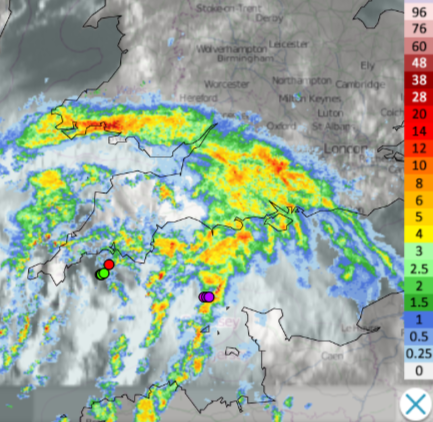
Another important aspect of the Netweather Radar is displaying lightning strikes or sferics. For those heading up hills and mountains, keeping an eye on the radar and the clouds you can see in the sky can be invaluable. A towering Cumulus bubbling up like an angry cauliflower could turn into a Cumulonimbus cloud, the storm clouds which bring hail, torrential rain, thunder and lightning. They can easily be behind you, so look all around. They tend to develop with the heat of the day, so the risk of heavy showers can increase by late afternoon, but not always.
The countryside can be beautiful in the sunshine or after a downpour. All that is needed is the suitable clothing. Rainbows, dramatic cloudscapes, mist and hail are all stunning and missed if you are staying indoors.
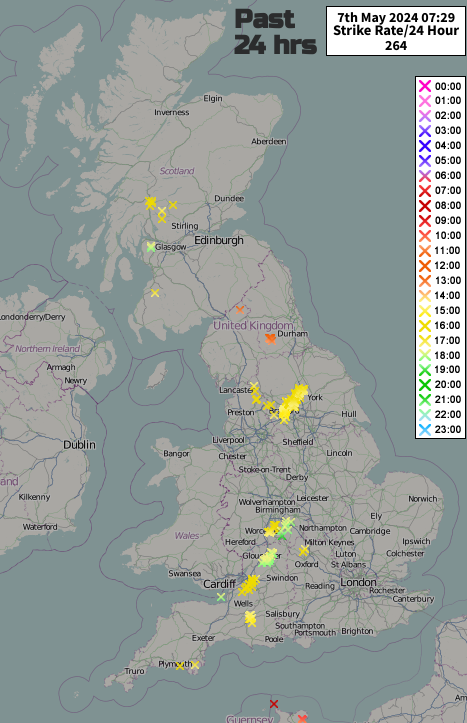
Remember to look at wind strength if heading up a hill and the feels like temperature. The usual Air temperature is taken in the shade with no wind. It can 'feel' quite different. Looking online or on a weather app is the quickest way to glean weather data. However, it is always worth looking at the overall picture as well. This can be from weather charts, an article or a television or radio broadcast. A line of weather symbols gives a snapshot of the forecast in your chosen location. There is no uncertainty expressed or other solutions offered, which can be an issue around rain. Frontal rain is often shown well as a distinct event, then brightening to showers. Shower risk is more challenging to communicate, as is thunderstorm risk. If you are heading out in a group, it's worth discussing the forecasts everyone has looked at.
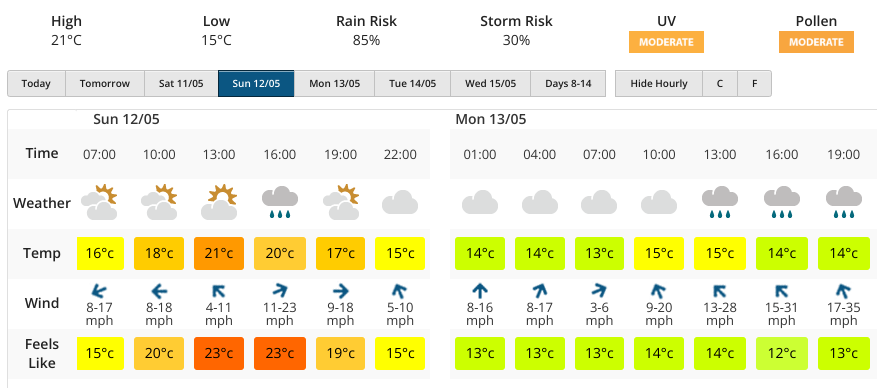
Before you set off, check the Met Office weather warnings. Be aware of how they are put together, that they combine likelihood (of, say, Heavy Rain) against potential impacts (time of day, recent conditions, busy area). Heavy rain can still occur outside a warning area, as can lightning or strong winds. Also, use your local knowledge about exposed areas or ask a local person if you are on holiday. Remain flexible, and maybe have an alternative route planned. The warnings cover rain, wind, snow, thunderstorms, lightning, ice, fog and extreme heat.
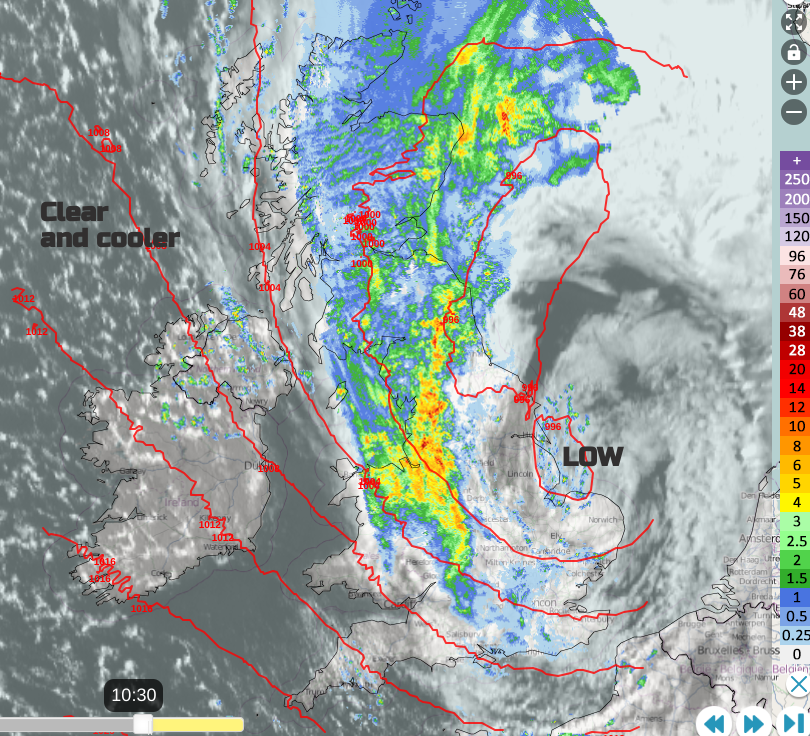
Satellite images show the cloud cover from above. With more daylight at this time of year, the visible images are available before 9am and can show low clouds, seafret, or haar lurking along North Sea coasts or in the Channel. Inland valley fog will also be visible, with white dendritic patterns as dark areas show clear skies.
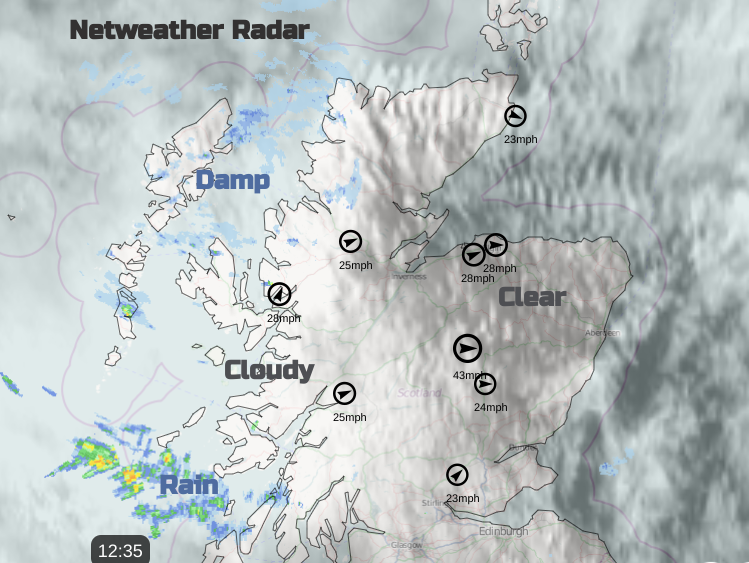
The patterns shown over Scotland show lee waves, which suggest brisk, gusty winds downwind of mountains even on a seemingly fine day.
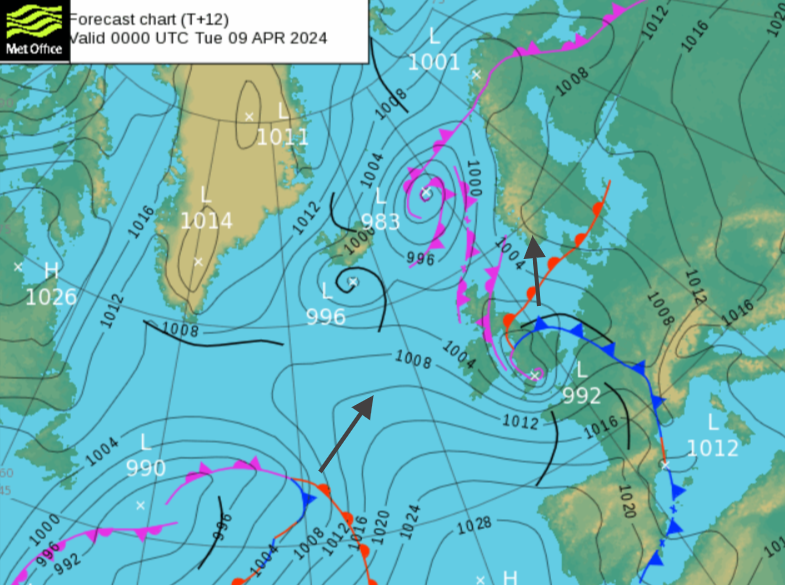
The synoptic charts convey a lot of information, but the basics can be covered; low pressure is often associated with wet and windy weather. Look for rain along the weather fronts, showers behind the cold front, or troughs, and where the airflow is coming from. High pressure can bring more settled, less changeable weather with light winds but variable amounts of cloud cover. The satellite picture is helpful in high-pressure situations.
The coastguard and RNLI remind people to check the tide times around our coasts to avoid getting cut off by the tide and stranded. Coastal waters have not had time to warm up yet, and there is a seasonal lag. It can be lovely to go for a walk without being concerned about the time or your speed, but coastal walks just need a bit more attention. The Environment Agency also includes coastal/tidal flood warnings on its websites.
This month, grass pollen season gradually gets going, with high grass pollen levels not usually appearing until later in the month. Tree pollen season is underway. If you wander through woodland and feel a bit sniffly, it's something to consider. Early morning walks can help some people avoid higher pollen levels.
After winter, there is always a warm and sunny weekend when everyone stays outside longer than they have done for months, and they "catch the sun". They are sunburnt. If you are heading out for a walk, especially in the middle part of the day, do consider the strength of the UV rays. Take a hat and slap on sunscreen. Find your sunglasses and water bottle. This change of season can catch us all out, but it is nice to finally feel some warmth from the sun and take in Vitamin D. What should you wear? The old proverb states "Cast ne'er a clout til May is out" so remember a sweater in your bag if you are out for the whole day.
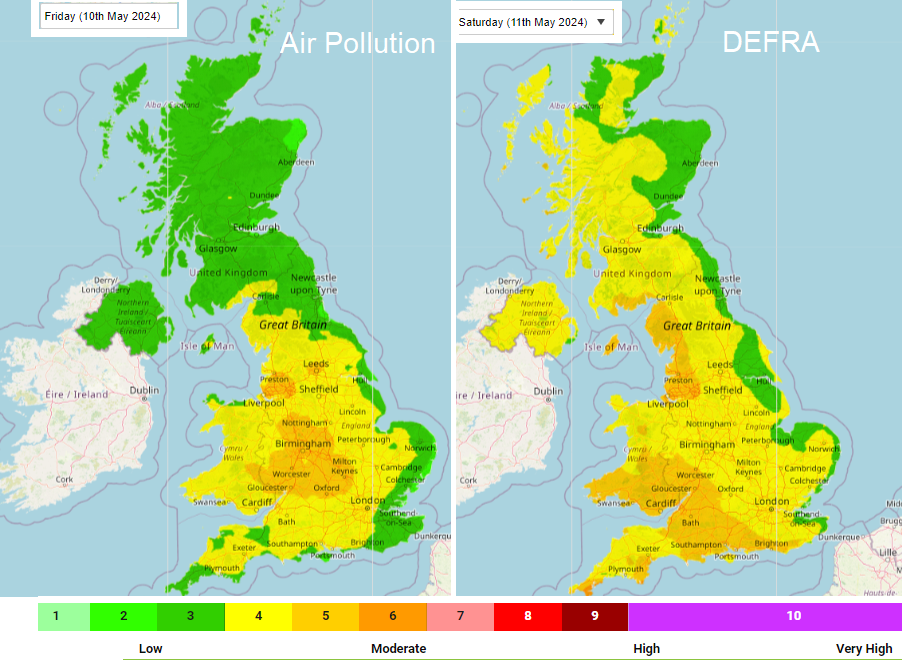
When high pressure sits over the UK, we can see fine, settled weather with sunshine and rising temperatures. Added to this can be light winds, and the conditions are ideal for heading out for a walk. That might be around your town or city visiting parks and green spaces along the way or to hills and countryside. Air pollution is more concentrated in cities and along roadsides, but the air quality can deteriorate more widely under steady high-pressure situations. It's just something to keep in mind for those with underlying health issues so as not to overdo things. In urban areas, street-level ozone pollution levels can peak late afternoon into the early evening on sunny days.
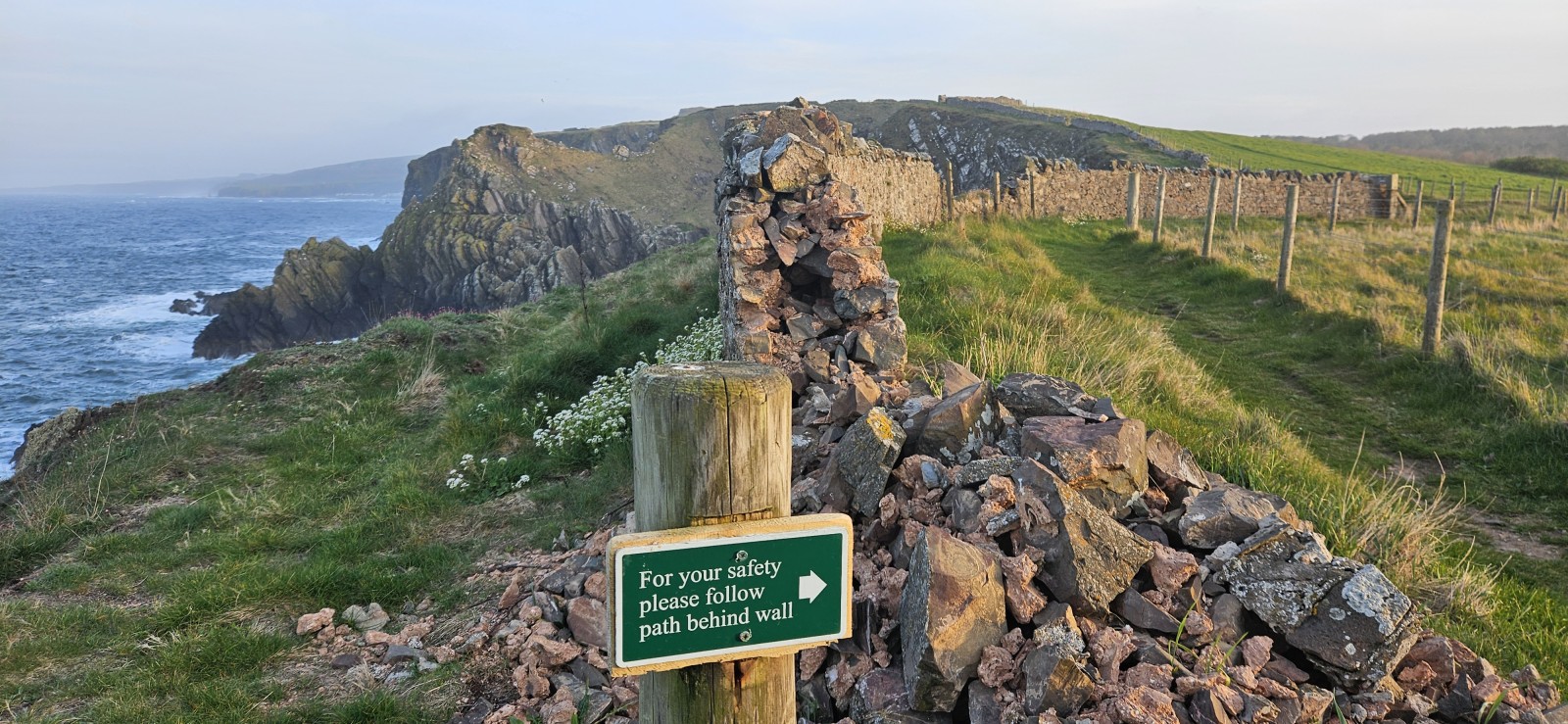
The UK countryside code asks: Respect Everyone, Protect the Environment, Enjoy the Outdoors. Walking has so many benefits, and the British countryside, National Parks and coasts can be wonderful spaces if we look after them. After the soggy winter and early spring, the thought of wildfires may seem absurd, but western Scotland has already seen warnings due to an extreme fire risk. Soon enough, the warm, sunny and drier weather affects moorland areas. Fire & Rescue teams and local councils issue advice and warnings at this time of year. Fire risk relates to the existing conditions, ground vegetation and the upcoming weather. Dry and windy weather is the ideal setup for wildfires to spread. Make sure everyone in your group takes great care when the risk rises.
This list is not supposed to put you off walking with talk of downpours, lightning, sneezing, sunburn and smoke. Not at all. Walking is wonderful. You see more than those whizzing by in a car or even on a bicycle. More flowers and plants appear in May, along with insects and busy birds. The incredible array of clouds is like a free show, and the simple act of walking a path can really help us feel better, both mentally and physically. Take the dog, join a Ramblers introductory group walk this month or another local outing, or just head out yourself and listen to the birdsong. Put in a bit of planning and experience that magic.